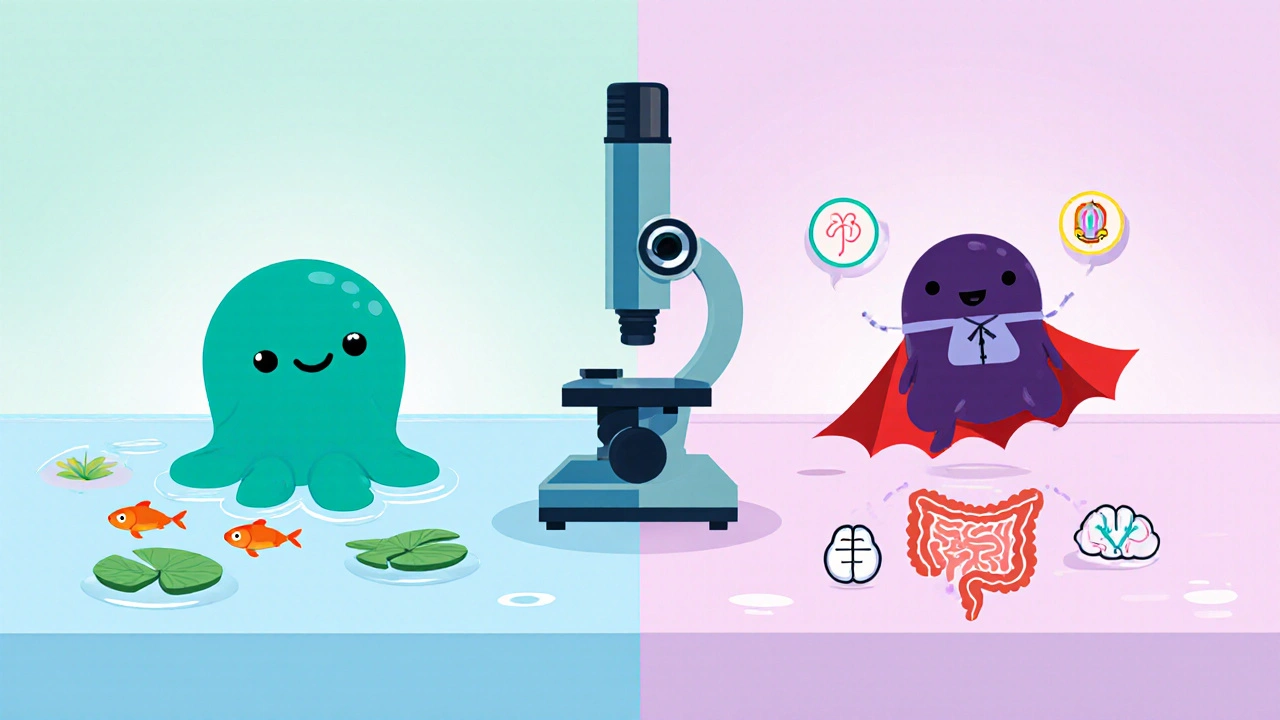Amoeba Infections: Causes, Risks, and Treatment Options
When dealing with Amoeba infections, infections caused by single‑cell parasites that can invade the eye, brain, or gut. Also known as amoebic infections, they often arise from contaminated water, soil, or contact‑lens solutions. Acanthamoeba is a frequent culprit in eye disease, while Naegleria fowleri can lead to rapid brain inflammation. Understanding the life cycle, transmission routes, and early signs is essential because prompt diagnosis can mean the difference between a simple cure and severe damage. These infections encompass a range of clinical presentations, require specific laboratory tests, and often need targeted antimicrobial therapy. They also demand awareness of environmental exposure – warm freshwater, untreated pools, and humid soil are common breeding grounds. By grasping how each organism enters the body – through the nose, eyes, or gastrointestinal tract – you can break the chain before infection takes hold.
Common Types, Symptoms, and How to Protect Yourself
Acanthamoeba keratitis is the most talked‑about eye condition linked to dirty lenses or freshwater exposure. It starts with mild irritation, progresses to painful redness, blurred vision, and can end in permanent scarring if treatment is delayed. Entamoeba histolytica causes dysentery and liver abscesses after ingesting contaminated food or water, presenting with bloody diarrhea, abdominal cramping, and fever. Naegleria fowleri lives in warm freshwater and can enter the nose during swimming, leading to primary amebic meningoencephalitis – a brain infection with a high fatality rate that progresses from severe headache to seizures within days. Risk factors include using tap water for rinsing contact lenses, swimming in untreated lakes, traveling to regions with poor sanitation, and exposure to soil without gloves. Simple, practical steps – using sterile lens solutions, avoiding nose submersion in warm lakes, washing hands after gardening, and drinking only filtered water – dramatically cut the odds of infection. Recognizing early red‑flag symptoms, like sudden eye pain or unexplained gastrointestinal distress, prompts faster medical attention and better outcomes.
Treatment strategies vary by organism but share a common core: accurate identification and timely drug therapy. For eye infections, a combination of topical anti‑amoebic drops (e.g., polyhexamethylene biguanide) and systemic oral medication is standard, often lasting weeks to ensure eradication. Brain infections demand aggressive intravenous drugs such as amphotericin B, miltefosine, and fluconazole, administered in specialized centers because resistance is common. Gastrointestinal infections caused by Entamoeba histolytica respond well to metronidazole followed by a luminal agent like paromomycin to clear cysts. Early lab work – culture, PCR, antigen detection, or microscopy – helps pinpoint the species, allowing clinicians to choose the right drug combo and avoid unnecessary side effects. Recovery chances improve when patients recognize symptoms early, seek care, and follow the full treatment course. Below you’ll find articles that break down drug interactions, dosing tips, prevention measures, and real‑world case studies, giving you a practical toolkit to manage any amoeba‑related health issue.
Amoeba Infections: Myths, Facts & How to Protect Yourself
Explore the truth behind amoeba infections, learn how they spread, spot symptoms, get diagnosed, and follow proven prevention steps to protect yourself.

